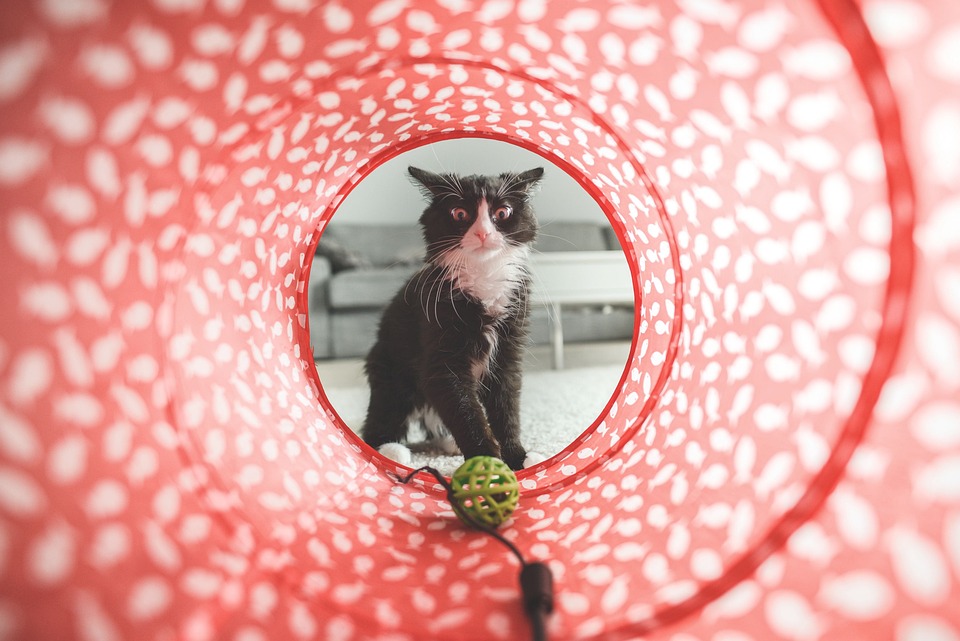Creating a Stress-Free Environment for Your Cat: Tips for a Happy Home
Introduction:
Creating a stress-free environment for your cat is crucial for their overall health and well-being. A calm and happy home contributes to a contented and relaxed feline companion. Just like humans, cats can experience stress, which can lead to various behavioral and health issues. By following these tips, you can ensure that your cat feels safe, secure, and stress-free in their surroundings.
1. Setting up a Safe and Comfortable Space:
Start by providing a designated area for your cat’s food, water, and litter box. Cats prefer to have separate spots for each of these activities. Choosing appropriate bedding and hiding spots will create a sense of security for your cat. Consider providing cozy blankets or beds in quiet corners of your home. Additionally, ensure that your cat has a peaceful and quiet location for resting and sleeping.
2. Establishing a Consistent Routine:
Cats thrive on routine, so maintaining a regular feeding schedule is essential. A predictable routine helps create a sense of security and reduces stress. Implementing a consistent playtime routine helps alleviate boredom and stress. Engage your cat in interactive play sessions daily to keep them mentally and physically stimulated. Additionally, settling into a consistent sleep schedule promotes relaxation and reduces anxiety.
3. Promoting Mental Stimulation:
To keep your cat mentally sharp and prevent boredom, enrich their environment with interactive toys and puzzles. Cats enjoy exploring and solving problems, so providing them with mentally stimulating activities is essential. Incorporate scratching posts and climbing structures to satisfy their natural instincts. Interactive playtime and activities also prevent boredom and stress.
4. Minimizing Stressful Triggers:
Identify and minimize potential stressors in your cat’s environment. Reduce loud noises and sudden movements that may startle your cat. During events like thunderstorms or fireworks, provide a safe space for your cat to retreat. Gradually introduce new people or pets to prevent overwhelming and anxious responses.
5. Ensuring Proper Nutrition:
Offer your cat a well-balanced diet that supports their overall health and immune system. Consult with a veterinarian to determine any specific dietary needs or underlying health concerns your cat may have. Avoid sudden diet changes as they can lead to digestive issues and unnecessary stress.
6. Maintaining a Clean and Hygienic Environment:
Regularly cleaning the litter box is crucial to prevent unpleasant odors and promote good hygiene. Keep the living space clean to avoid potential allergens and irritants that can cause stress. When cleaning, use pet-friendly products to minimize exposure to harmful chemicals.
7. Providing Adequate Vertical Space:
Cats enjoy climbing and observing their surroundings from higher vantage points. Incorporate vertical elements such as cat trees or shelves to allow your cat to climb and explore. This creates a sense of territory and ownership, reducing stress and potential conflicts with other pets.
8. FAQs:
– Q1: How can I tell if my cat is stressed?
– Q2: What are some common signs of stress in cats?
– Q3: Can stress affect my cat’s health?
– Q4: How can I help my cat relax during vet visits?
– Q5: Are there any natural remedies for cat stress?
– Q6: Should I consider using pheromone products to reduce stress in my cat?
Conclusion:
By implementing these tips, you can create a stress-free environment for your cat and promote their overall well-being. It’s important to observe your cat’s behavior and consult with a veterinarian if you notice any persistent signs of stress. Remember, a happy and stress-free cat is a healthy cat.








